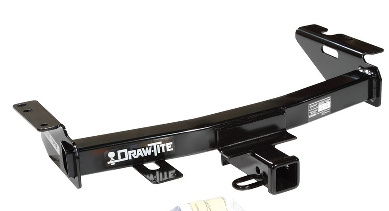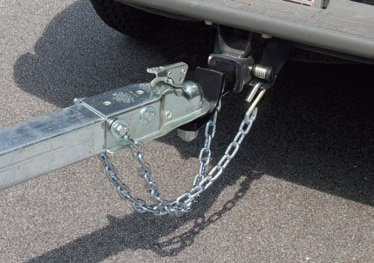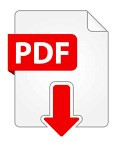Trailer Plans pdf
Build It For Less!
Tips And Information
Tips And Information On Trailer Towing And Much More.
Welcome to our "Tips & Info" page. Here you can find tips and information on anything from trailer towing to safety to welding and trailer building tips and more.
If you are new to trailers or towing a trailer, we also provide you with some links at the bottom of the page that you may find useful.
New articles and information are added regularly so be sure to bookmark us and stop back by once in a while to see if we have anything new that may interest you.
Safety Tips for Driving with a Trailer
Here are some basic safety tips for driving with a trailer from the U.S. Department Of Transportation.
Take time to practice before driving on main roads and never allow anyone to ride in or on the trailer. Before you leave, remember to check routes and restrictions on bridges and tunnels. Consider the following safety tips each time you drive with a trailer.
General Handling
Use the driving gear that the manufacturer recommends for towing.
Drive at moderate speeds. This will place less strain on your tow vehicle and trailer. Trailer instability (sway) is more likely to occur as speed increases.
Avoid sudden stops and starts that can cause skidding, sliding, or jackknifing.
Avoid sudden steering maneuvers that might create sway or undue side force on the trailer.
Slow down when traveling over bumpy roads, railroad crossings, and ditches.
Make wider turns at curves and corners. Because your trailer's wheels are closer to the inside of a turn than the wheels of your tow vehicle, they are more likely to hit or ride up over curbs.
To control swaying caused by air pressure changes and wind buffeting when larger vehicles pass from either direction, release the accelerator pedal to slow down and keep a firm grip on the steering wheel.
Braking
Allow considerably more distance for stopping.
If you have an electric trailer brake controller and excessive sway occurs, activate the trailer brake controller by hand. Do not attempt to control trailer sway by applying the tow vehicle brakes; this will generally make the sway worse.
Always anticipate the need to slow down. To reduce speed, shift to a lower gear and press the brakes lightly.
Acceleration and Passing
When passing a slower vehicle or changing lanes, signal well in advance and make sure you allow extra distance to clear the vehicle before you pull back into the lane.
Pass on level terrain with plenty of clearance. Avoid passing on steep upgrades or downgrades.
If necessary, downshift for improved acceleration or speed maintenance.
When passing on narrow roads, be careful not to go onto a soft shoulder. This could cause your trailer to jackknife or go out of control.
Downgrades and Upgrades
Downshift to assist with braking on downgrades and to add power for climbing hills.
On long downgrades, apply brakes at intervals to keep speed in check. Never leave brakes on for extended periods of time or they may overheat.
Some tow vehicles have specifically calibrated transmission tow-modes. Be sure to use the tow-mode recommended by the manufacturer.
Backing Up
Put your hand at the bottom of the steering wheel. To turn left, move your hand left. To turn right, move your hand right. Back up slowly. Because mirrors cannot provide all of the visibility you may need when backing up, have someone outside at the rear of the trailer to guide you, whenever possible.
Use slight movements of the steering wheel to adjust direction. Exaggerated movements will cause greater movement of the trailer. If you have difficulty, pull forward and realign the tow vehicle and trailer and start again.
Parking
Try to avoid parking on grades. If possible, have someone outside to guide you as you park. Once stopped, but before shifting into Park, have someone place blocks on the downhill side of the trailer wheels. Apply the parking brake, shift into Park, and then remove your foot from the brake pedal. Following this parking sequence is important to make sure your vehicle does not become locked in Park because of extra load on the transmission. For manual transmissions, apply the parking brake and then turn the vehicle off in either first or reverse gear.
When uncoupling a trailer, place blocks at the front and rear of the trailer tires to ensure that the trailer does not roll away when the coupling is released.
An unbalanced load may cause the tongue to suddenly rotate upward; therefore, before un-coupling, place jack stands under the rear of the trailer to prevent injury.
Connecting Your Trailer to Your Tow Vehicle
Tow vehicles and trailers must be compatible with hitching, braking, and wiring systems to ensure safety.
Hitching Systems
The trailer towing industry has developed a classification system that differentiates hitches according to the amount of weight they can tow. This system addresses tongue weight and total weight. Keep in mind that within each classification are numerous hitches made by a variety of manufacturers.
The three most common types of hitches are the weight-carrying hitch, the weight-distributing (or load equalizer) hitch, and the fifth-wheel hitch, or gooseneck. Weight-carrying hitches are designed to carry all of the trailer's tongue weight. Weight-distributing hitches are used with a receiver hitch and special parts that distribute the tongue weight among all tow vehicle and trailer axles. Fifth-wheel hitches are designed for mounting the trailer connection point in the middle of the truck bed.

When purchasing a hitch, use the recommendations of the manufacturer of the tow vehicle and trailer based on the type and weight of the trailer. Make sure the hitch has provisions for the connection of safety chains, which are required by most states.
When connected, safety chains should have some slack to permit sharp turns but should not drag on the road. In addition, they should cross under the trailer tongue to help prevent the tongue from dropping to the road in the event the trailer separates from the tow vehicle.

Braking Systems
The selection of a brake system also will depend on your tow vehicle and the type and fully loaded weight of your trailer. For a trailer with a loaded weight of more than 1,500 pounds, many states require a separate braking system and a breakaway switch, located on the tongue of the trailer, to activate the trailer brakes in the event the trailer separates from the tow vehicle. There are two basic types of brake systems designed to activate the brakes on a trailer:
Electronically controlled brakes usually provide automatic and manual control for trailer brakes. They require that the tow vehicle be equipped with a controlling device and additional wiring for electrical power. These brakes typically have a control box installed within reach of the driver and can be manually or automatically applied. The control box may require adjustment or tuning in for variations in trailer load.
Surge brakes are independent hydraulic brakes activated by a master cylinder at the junction of the hitch and trailer tongue. These brakes are not controlled by the hydraulic fluid in the brake system of the tow vehicle. Note: The hydraulic system of the tow vehicle should never be directly connected to the hydraulic system of the trailer. These systems are self-compensating and do not require adjustment for variation in trailer load.
Follow the tow vehicle manufacturer's recommendations for brake selection. Some states require braking systems on all axles of the trailer. So, check your state's requirements by contacting the motor vehicle administration.
Wiring Systems
To provide power to trailer lights, a four-way (or more) connector is hooked into the tow vehicle's electrical system. Many tow vehicle manufacturers offer a 7-way connector that may include an electric brake signal, power supply, and backup lights, in addition to the typical four functions. Note: You must ensure that the signals on the electrical connector of the tow vehicle match the electrical connector of the trailer.
Basic Towing Components
Add your product description that will be useful for your customers. Add the exclusive properties of your product that will make customers want to buy it. Write your own text and style it in Store properties on Style tab.
Best Quality Trailer Plans Online
Now Available In High Quality PDF Format
We have now made all of our trailer plans available in high quality pdf format. So you no longer have to wait to receive your trailer plans. Plus no more shipping fees!
You will receive your plans to build your trailer shortly after your payment has been received.

We use Stirpe Payment Proccessing, the same trusted payment gateway used by Amazon, Lyft, Google, Zillow, Shopify and more.
We are not offering PayPal Payments at this time due to problems with customers not receiving their downloads after
payment completion. We will return PayPal Payments to our site as soon as we have resolved the problem.


